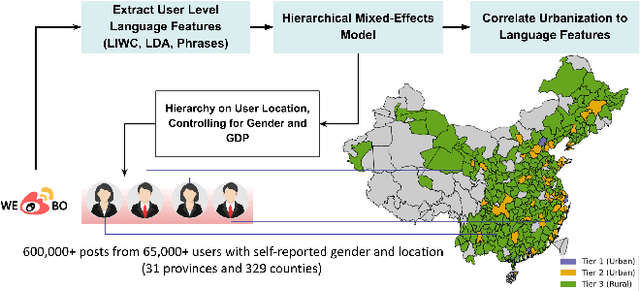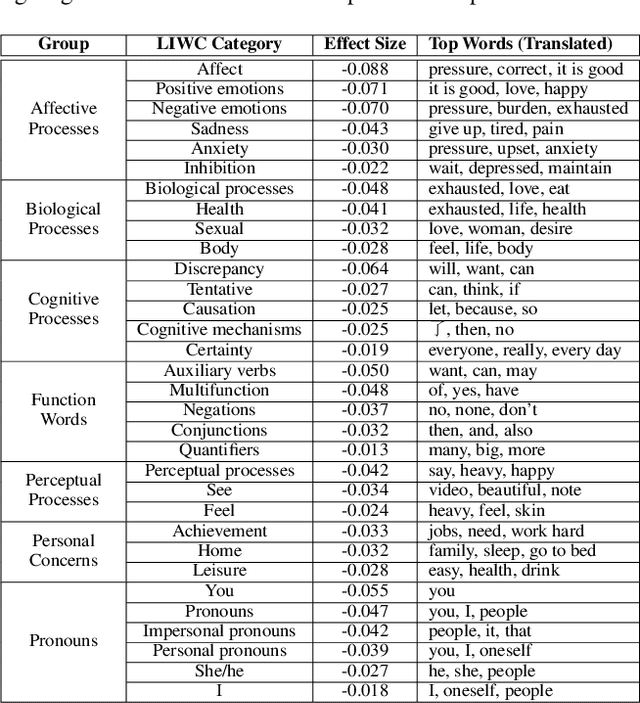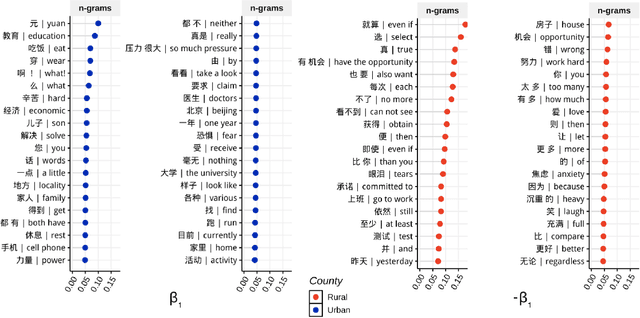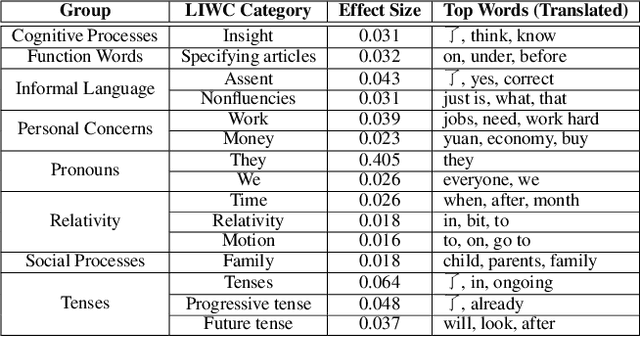Vinit Jakhetiya
Social Media Reveals Urban-Rural Differences in Stress across China
Nov 03, 2021



Abstract:Modeling differential stress expressions in urban and rural regions in China can provide a better understanding of the effects of urbanization on psychological well-being in a country that has rapidly grown economically in the last two decades. This paper studies linguistic differences in the experiences and expressions of stress in urban-rural China from Weibo posts from over 65,000 users across 329 counties using hierarchical mixed-effects models. We analyzed phrases, topical themes, and psycho-linguistic word choices in Weibo posts mentioning stress to better understand appraisal differences surrounding psychological stress in urban and rural communities in China; we then compared them with large-scale polls from Gallup. After controlling for socioeconomic and gender differences, we found that rural communities tend to express stress in emotional and personal themes such as relationships, health, and opportunity while users in urban areas express stress using relative, temporal, and external themes such as work, politics, and economics. These differences exist beyond controlling for GDP and urbanization, indicating a fundamentally different lifestyle between rural and urban residents in very specific environments, arguably having different sources of stress. We found corroborative trends in physical, financial, and social wellness with urbanization in Gallup polls.
Detecting COVID-19 and Community Acquired Pneumonia using Chest CT scan images with Deep Learning
Apr 11, 2021



Abstract:We propose a two-stage Convolutional Neural Network (CNN) based classification framework for detecting COVID-19 and Community-Acquired Pneumonia (CAP) using the chest Computed Tomography (CT) scan images. In the first stage, an infection - COVID-19 or CAP, is detected using a pre-trained DenseNet architecture. Then, in the second stage, a fine-grained three-way classification is done using EfficientNet architecture. The proposed COVID+CAP-CNN framework achieved a slice-level classification accuracy of over 94% at identifying COVID-19 and CAP. Further, the proposed framework has the potential to be an initial screening tool for differential diagnosis of COVID-19 and CAP, achieving a validation accuracy of over 89.3% at the finer three-way COVID-19, CAP, and healthy classification. Within the IEEE ICASSP 2021 Signal Processing Grand Challenge (SPGC) on COVID-19 Diagnosis, our proposed two-stage classification framework achieved an overall accuracy of 90% and sensitivity of .857, .9, and .942 at distinguishing COVID-19, CAP, and normal individuals respectively, to rank first in the evaluation. Code and model weights are available at https://github.com/shubhamchaudhary2015/ct_covid19_cap_cnn
 Add to Chrome
Add to Chrome Add to Firefox
Add to Firefox Add to Edge
Add to Edge